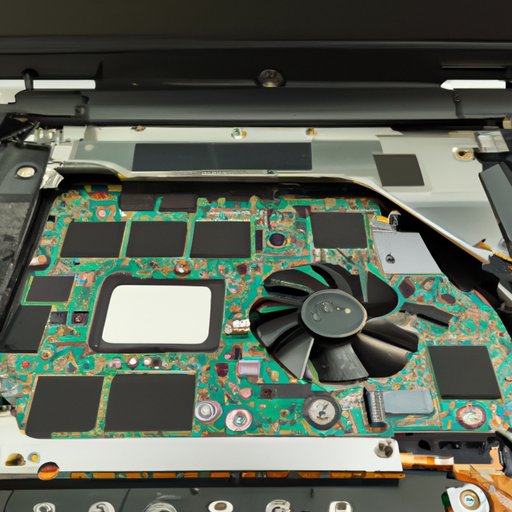Introduction
When buying a laptop, it’s important to understand the specifications of the device to ensure it meets your needs. Knowing the laptop’s specs can help you determine whether the device is capable of running certain programs, if it has enough storage space, or if it can handle intensive tasks. But how do you check laptop specs?
Laptop specs, also known as technical specifications, are details about the features of the laptop. This includes things like processor speed, RAM, storage capacity, display size, and more. It’s important to know these details before purchasing a laptop so that you can be sure it will meet your needs and expectations.
Research the laptop manufacturer’s website for spec sheets and manuals
The first step in checking laptop specs is to research the laptop manufacturer’s website for spec sheets and manuals. These documents usually provide detailed information about the laptop’s technical specifications.
Accessing the manufacturer’s website: To access the manufacturer’s website, simply search for the company name on any search engine. Once you’ve located the official website, look for a section labeled “Support” or “Downloads”. This is where you’ll find the spec sheets and manuals.
Locating spec sheets and manuals: Once you’ve accessed the support or downloads section of the website, you should be able to locate the spec sheets and manuals for your specific model. If not, try searching for the model number or name.
Understanding the information provided: The spec sheets and manuals should provide detailed information about the laptop’s features, including processor type, RAM, storage capacity, display size, graphics card, ports, battery life, and more. Make sure you understand the information provided in order to make an informed decision.

Use a free online tool to check specs and compare with other models
Another way to check laptop specs is to use a free online tool. There are many tools available that allow you to view and compare different models. This can help you decide which model is best for your needs.
Identifying an appropriate online tool: When looking for an online tool, make sure it is reputable and provides accurate information. Do some research and read reviews to find the best option.
Using the online tool to check specs: Once you’ve identified an appropriate online tool, you can use it to view the specs of different models. Enter the model name or number into the search bar and the tool will provide details about the laptop’s features.
Comparing specs with other models: After viewing the specs of different models, you can compare them to see which one is the most suitable for your needs. Compare processor speed, RAM, storage capacity, display size, graphics card, ports, and battery life to determine the best model.
Download a system information tool to view the internal components of the laptop
If you want to get a more detailed view of the laptop’s internal components, you can download a system information tool. These tools provide detailed information about the hardware and software components of the laptop.
Finding and downloading the right system information tool: There are many system information tools available, but it’s important to find one that is reliable and provides accurate information. Do some research and read reviews to find the best option.
Using the tool to view internal components: Once you’ve downloaded the system information tool, you can use it to view detailed information about the laptop’s internal components. This includes things like processor type, RAM, storage capacity, display size, graphics card, ports, and more.

Open the laptop to access the hardware components
If you want to get an even closer look at the laptop’s components, you can open the laptop and access the hardware components. This may be necessary if you want to upgrade or replace certain parts.
Safety considerations: Before opening the laptop, make sure you are aware of any safety considerations. Read the manual and make sure you have the right tools and materials.
Tools needed to open the laptop: You will need special tools to open the laptop. These can usually be purchased from electronics stores or online retailers.
Locating and accessing the hardware components: Once you’ve opened the laptop, you can locate and access the hardware components. This includes things like the processor, RAM, storage drives, and more.
Check the laptop’s System Properties to view basic specifications
Finally, you can check the laptop’s System Properties to view basic specifications. This is a quick and easy way to view the minimum requirements for the laptop.
Accessing the System Properties on Windows: To access the System Properties on Windows, click the Start button and then click on “System”. This will open up a window with information about the laptop’s specs.
Viewing the basic specs: In the System Properties window, you can view basic specs such as processor type, RAM, storage capacity, display size, graphics card, ports, and more.
Conclusion
Checking laptop specs is an important part of making an informed purchase. Knowing the laptop’s specs can help you decide if it is capable of running certain programs, if it has enough storage space, or if it can handle intensive tasks. To check laptop specs, you can research the laptop manufacturer’s website for spec sheets and manuals, use a free online tool to check specs and compare with other models, download a system information tool to view the internal components of the laptop, open the laptop to access the hardware components, or check the laptop’s System Properties to view basic specifications.
By understanding laptop specifications, you can make sure you have the right model for your needs. This comprehensive guide outlines how to check laptop specs and make sure you have the right device for your needs.


